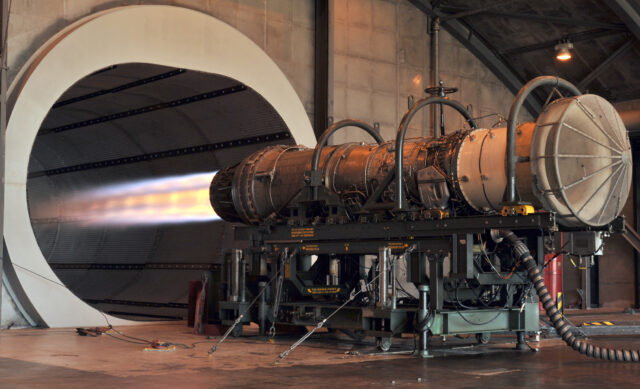Why alternative PNT could be the answer to the world’s growing GPS interference crisis

October 24, 2025

Global navigation has never been more essential, or more vulnerable.
From aircraft flight paths to financial transactions, modern life depends on a fragile network of satellites orbiting 20,000 kilometres above Earth. These Global Navigation Satellite Systems (GNSS), including GPS and Europe’s Galileo, provide the positioning, navigation and timing (PNT) signals that underpin everything from logistics and telecoms to energy grids and stock exchanges.
But those faint radio signals are easily jammed, spoofed or disrupted. In recent years, interference has grown from a nuisance into a national security threat.
GNSS interference is a growing global problem
The weakness of GNSS signals means they can be overwhelmed by relatively cheap, low-power devices that block or mimic satellite transmissions.
Recent headline cases included EC President Ursula von der Leyen’s aircraft suffering a GPS blackout over Eastern Europe and Qatar halting maritime operations due to spoofing in the Strait of Hormuz.
The UK and US governments each estimate a one-day GNSS outage could cost between $1–1.3 billion per day in economic losses. IATA has been forthright on the dangers to aviation, urging IACO last month to prioritise a resolution to these issues or risk the safety and security of flight.
Eurocontrol’s Network Operations data for the third quarter of 2025 estimates around 300 – 400 daily reports of interference in European airspace alone, primarily along Eastern flight corridors.

In a recent interview with AGN, Air Astana CEO Peter Foster recalled that there have been incidents, mainly along the Russian border, but that nothing had created safety-of-flight issues.
“It’s interference rather than jamming, and it tends to be sporadic,” he said. “It’s one of the consequences of being so close to a 7,000-kilometre border with a country that’s conducting electronic warfare on a daily basis. But we have strong procedures in place, and the aircraft themselves are well-equipped to handle GNSS interruptions using inertial and DME/DME navigation.”
While commercial aircraft can fly safely if GPS is blocked, spoofing presents a greater danger. Presenting false position data can trick onboard autopilots into changing course, not just on aircraft but also on ships, if crew don’t realise quickly that the data is false.
Even more critical than navigation, however, is timing. GPS provides nanosecond-level timing for things like power grids, financial systems and telecommunications networks. Disrupted or spoofed signals can result in lost mobile networks, blackouts and more, so governments treat it as critical national infrastructure.
As the world moves toward greater autonomy, finding a remedy for these vulnerabilities is becoming increasingly urgent. While research continues into emerging technologies such as MagNav, the most immediate and practical solution appears to lie in resilient PNT systems.
What is Alt-PNT and how does it solve GPS interference?
Positioning, Navigation and Timing (PNT) is the collective term for any system that determines where something is, how it is moving and when an event occurs. GNSS is one form of PNT, but it does not have to be the only one.
Modern alternative PNT architectures are evolving into layered, hybrid systems that draw data from multiple complementary sources. Alongside traditional satellite signals, these include terrestrial networks, inertial sensors, celestial navigation, and even “signals of opportunity” – radio transmissions from mobile networks, television towers, or satellites that can be repurposed to calculate position and time.
This diversification is key to resilience. In the past, a loss or spoofing of GNSS meant an immediate degradation in navigation accuracy. Under an alt-PNT model, however, redundant layers ensure continuity. If one source fails or becomes unreliable, the others can instantly take over.
In effect, alt-PNT transforms navigation from a single-thread dependency into a distributed, intelligent ecosystem. It continuously cross-checks and validates inputs to detect anomalies, such as spoofed coordinates or sudden signal loss, and automatically recalibrates using trusted references.
ESA backs UK-led alternative navigation system
In the UK, Reading-based ALL.SPACE is pioneering one of Europe’s most advanced efforts to create GNSS-independent navigation.
The company has been awarded €950,000 (US $1.1 million) by the European Space Agency’s Navigation Innovation and Support Programme (NAVISP) to build an Alt-PNT system that can function even when GPS and Galileo are denied.
Using its multi-orbit communications terminal, ALL.SPACE will develop technology that detects and analyses “signals of opportunity” – incidental radio emissions from existing networks that can be repurposed to calculate position and orientation.

“This is about restoring confidence and control in the most contested environments,” said Paul McCarter, CEO of ALL.SPACE. “GNSS denial is no longer a hypothetical scenario; it’s a growing reality.”
Delivered in partnership with British navigation specialists GMV NSL, the project embeds a resilient PNT layer directly into ALL.SPACE’s terminal architecture. Once proven, the capability could support defence, space and critical infrastructure users who require assured navigation in degraded environments.
Iridium and the rise of complementary PNT networks in the US
Across the Atlantic, the US Department of Transportation is funding a similar effort through its Complementary Positioning, Navigation and Timing (CPNT) Action Plan.
In October, Iridium Communications received a Phase II contract to deploy and test a complementary PNT system based on its constellation of 66 low-Earth-orbit satellites.

Iridium’s encrypted L-band signals are around 1,000 times stronger than GNSS transmissions, capable of penetrating buildings and resisting jamming. Working with T-Mobile, Iridium is installing PNT receivers at 90 live 5G sites across the US, delivering sub-100-nanosecond timing accuracy for network synchronisation.
“It is essential to strengthen the resilience of our 5G wireless networks and other critical infrastructure that relies on PNT,” said Dr Michael O’Connor, Iridium’s Executive Vice President for PNT. “Our partnership with T-Mobile underscores the proven performance of our solution and reinforces why it’s the gold standard for resilient timing.”
The US model, like Europe’s, demonstrates a growing recognition that commercial players are now central to building navigation resilience, blending satellite and terrestrial networks in hybrid architectures.
PNT technology strengthens air and defence operations
In modern warfare, the first move is often to blind the opponent’s positioning systems. Militaries have learned that disrupting GPS can paralyse communications, logistics and weapons targeting.
That is why resilient PNT is now a major research priority for NATO and its allies. The US Air Force is testing multi-sensor PNT systems that combine satellite data with inertial sensors, radar and celestial navigation. The UK Ministry of Defence is pursuing similar projects to develop sovereign navigation capabilities that do not depend on foreign satellites.
These systems not only protect aircraft and ships but can also enable autonomous vehicles and drones to navigate silently without broadcasting detectable signals.
A global market for assured and alternative navigation
According to Analysys Mason, the defence market for assured and alternative PNT services could exceed $10 billion over the next decade. The European Union Agency for the Space Programme (EUSPA) forecasts that by 2033, navigation and timing applications will generate €580 billion ($673 billion) in annual global revenues, much of it from PNT-enabled services.
From Iridium’s timing-secure 5G integration to ALL.SPACE’s signal-of-opportunity analytics, companies across the world are racing to capture this opportunity – one built not just on satellites but on data fusion, resilience and independence.
The next generation of navigation will not depend on a single constellation or signal. It will be layered, hybrid and decentralised, blending space-based, terrestrial and software-defined sources to maintain continuity even in the harshest conditions.
ESA officials stress that GNSS will remain vital, but the future lies in hybrid PNT architectures – systems designed to keep economies, militaries and societies moving even when the satellites fall silent.
Featured image: Johannes (AI) / stock.adobe.com
















